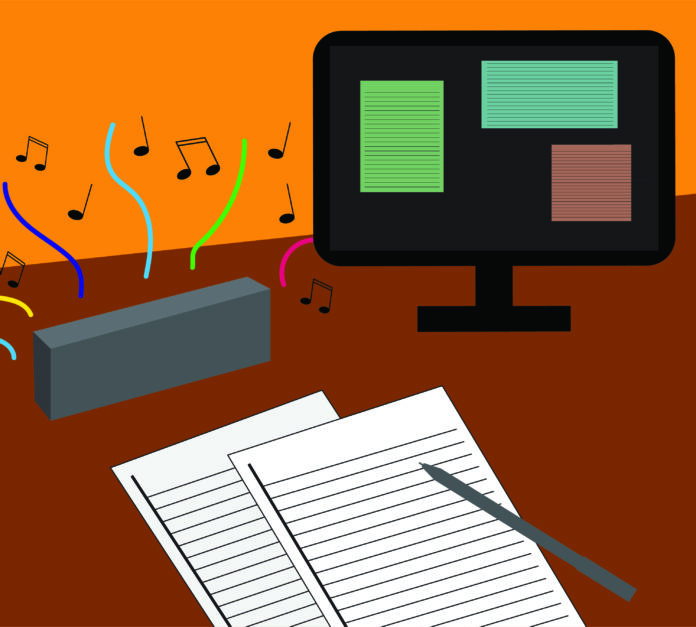Although I’m sure it’s all been said before, for me, the creative process goes far beyond just the times I sit down to write. As important as it is to write consistently, consuming interesting media is what keeps my creativity flowing. Between 2016 and 2020, I didn’t write anything, largely because I had stopped reading for fun. When I finally made a 2020 New Year’s Resolution to read for fun again, it was as if a part of my brain that had been shut off lit up again, and the inspiration to write soon followed.
Having consistent access to new thoughts fuels the next important non-writing step in my process: daydreaming. Obviously, one should not daydream all the time, since we are human adults who have to pay attention to concrete things. However, taking some time to play music and genuinely indulge in the urge to daydream — to let all the new concepts my brain has absorbed be processed and combined in new and interesting ways — is how story ideas come to me.
I keep a document of notes on my computer for my current projects, such as random dialogue, notes on themes, and questions that I want to think about as I continue to daydream and write. If I feel the need to physicalize my thoughts even further, pre-writing, Pinterest boards and playlists are the perfect ways to do so. If I have a solid idea, I also like to run it by a trusted friend and get their opinion. Sometimes, even at the very beginning, having another set of eyes on a project can help me see it from new and interesting angles.
I have stalled on writing for long enough. I personally prefer to write in the mornings, while my mind is still fresh. Though I try to write for about half an hour — about 400 words — a day, some days I have no energy, or have an excess of responsibilities and skip; some days, the inspiration sweeps me away and I am able to put my life on hold for an hour or more and crank out 1,500 words at once. The ability to write, like anything, depends on a multitude of factors and, while it should be a consistent practice, it doesn’t need to be forced if there is no deadline. I always try to remember that I’m writing for fun, so it shouldn’t feel like a chore.
I like to listen to the playlist I have inevitably created for the story while I write, sometimes putting on repeat one or two songs that capture the mood I am currently writing. Sometimes I put a song on repeat and take a solid 10 minutes of my writing time to daydream, mapping out what I am going to write in my head before putting it to paper. Moreover, in the service of not making writing a chore, I write what I can — meaning if I can only come up with a scene outline or the dialogue, that is what I write, knowing I can come up with the rest of the scene later.
While I carefully consider my word choice while I’m writing, I try my best not to edit more than a few words when I go back and read my work the next day. A word or a line changed is acceptable, but anything that feels like it should be entirely rewritten is simply marked with a comment for later. Especially when writing a first draft, it is important to keep moving, or it will never be finished.
Finally, I am a big believer in constructive criticism. However, choosing who gets to review and criticize your work is very important. It should be someone enthusiastically willing to do so, but not someone who will only praise your work to the skies — that will give you a great ego boost, but do nothing for your work. I am lucky to have several people who are not only willing to read my work, but to criticize it honestly. Just as importantly, I am willing to take their criticism and recognize, whether I agree with it or not, that they are not critiquing me as a person, but trying to help me make my work better.
Author Bio: Erin Froud is an arts and business student in her 3B term studying rhetoric, media and professional communication. Originally from Minnesota, she has been writing since she was a child and is an alum of the University of Iowa Young Writers’ Studio summer residential program. When she’s not writing, for school or for fun, she can be found cooking, playing cards or Dungeons and Dragons with her roommates, or trying to conquer the New York Times crossword puzzle.































